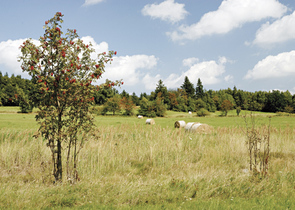Nature Conservation 2/2012 — 23. 8. 2012 — Research, Surveys and Data Management — Print article in pdf
Vačkář D., Melichar J., Lorencová E. & Hönigová I.: Ecosystem Service Assessment Applied for Grassla

Abandonment of traditional small-scale farming combined with the agricultural intensification during the last decades has lead to a significant decline in semi-natural grasslands and correlated ecosystem goods and services.
The presented study aims at accounting for the full benefits provided by grasslands ecosystems in the Czech Republic in order to support grassland management and conservation and to provide balanced information to related decision making. Various grassland ecosystem services were assessed and quantified, such as livestock production, carbon sequestration, water regulation, soil erosion reduction, biological invasion resistance as well as aesthetic and recreation services, based on a habitat ecosystem accounting approach. The authors applied a mixture of approaches combining biophysical indicator assessments and economic valuation approaches. In both cases, they relied on value transfers from existing studies of ecosystem processes and valuation surveys. Grasslands in the Czech Republic can support over 950 thousand milk-cows, store 550 Gg of carbon annually and contribute to the regulation of water flows, erosion rates and biological invasions. The services derived from grassland ecosystem functioning can reach considerable values. Natural, semi-natural and managed grasslands provide benefits of 258 million euros for erosion regulation, 47 million euros for carbon sequestration and additional 54 million euros for recreation services. The value of services provided by both semi-natural and intensive grasslands in the CR is higher by an order of magnitude when compared to their maintenance costs.

